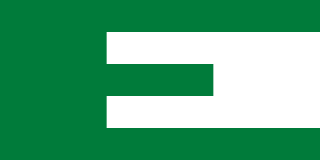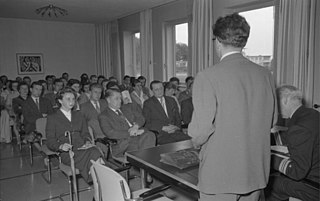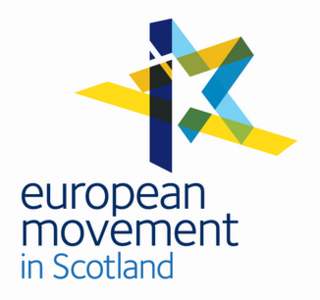
The Council of Europe is an international organisation with the goal of upholding human rights, democracy and the rule of law in Europe. Founded in 1949, it brings together 46 member states with a population of approximately 675 million as of 2023; it operates with an annual budget of approximately 500 million euros.

The European Economic Community (EEC) was a regional organisation created by the Treaty of Rome of 1957, aiming to foster economic integration among its member states. It was subsequently renamed the European Community (EC) upon becoming integrated into the first pillar of the newly formed European Union in 1993. In the popular language, however, the singular European Community was sometimes inaccurately used in the wider sense of the plural European Communities, in spite of the latter designation covering all the three constituent entities of the first pillar.

The European Union is a geo-political entity covering a large portion of the European continent. It is founded upon numerous treaties and has undergone expansions and secessions that have taken it from six member states to 27, a majority of the states in Europe.

Paul-Henri Charles Spaak was an influential Belgian Socialist politician, diplomat and statesman. Along with Robert Schuman, Alcide De Gasperi and Konrad Adenauer he was a leader in the formation of the institutions that evolved into the European Union.

Duncan Edwin Duncan-Sandys, Baron Duncan-Sandys, was a British politician and minister in successive Conservative governments in the 1950s and 1960s. He was a son-in-law of Winston Churchill and played a key role in promoting European unity after World War II.
European integration is the process of industrial, economic, political, legal, social, and cultural integration of states wholly or partially in Europe, or nearby. European integration has primarily but not exclusively come about through the European Union and its policies.

The Hague Congress or the Congress of Europe was a conference that was held in The Hague from 7–11 May 1948 with 750 delegates participating from around Europe as well as observers from Canada and the United States of America.

The College of Europe is a post-graduate institute of European studies with its first campus opened in Bruges, Belgium, a second campus located in Warsaw, Poland, and a third one recently established in Tirana, Albania. The College of Europe in Bruges was founded in 1949 by leading historical European figures and founding fathers of the European Union, including Salvador de Madariaga, Winston Churchill, Paul-Henri Spaak and Alcide De Gasperi as one of the results of the 1948 Congress of Europe in The Hague to promote "a spirit of solidarity and mutual understanding between all the nations of Western Europe and to provide elite training to individuals who will uphold these values" and "to train an elite of young executives for Europe". It has the status of Institution of Public Interest, operating according to Belgian law. The second campus in Natolin (Warsaw), Poland opened in 1992. The College of Europe is historically linked to the establishment of the European Union and its predecessors, and to the creation of the European Movement International, of which the college is a supporting member. Federica Mogherini, former High Representative of the Union for Foreign Affairs and Security Policy, was appointed as the Rector to start in September 2020; former President of the European Council Herman, Count Van Rompuy is chairman of the board.

The Union of European Federalists (UEF) is an international non-profit association originally founded in 1946 and refounded in 1973, promoting the advent of a European federal State based on the idea of unity in diversity. In 1946, it brought together a number of initiatives, particularly from the Resistance, aimed at creating a European federation, including the Movimento Federalista Europeo created the day after the fall of Benito Mussolini in Milan from 27 to 29 August 1943, under the impetus of the opponent Altiero Spinelli, among others, and the French Committee for the European Federation created in Lyon by members of the "Francs-tireurs" group in June1944.

Young European Federalists is a political youth organisation. Active in most European countries, it seeks to promote European integration through the strengthening and democratisation of the European Union (EU). JEF has close ties to the European Movement and the Union of European Federalists and is a full member of the European Youth Forum (YFJ).

The Luxembourg Compromise was an agreement reached in January 1966 to resolve the "Empty Chair Crisis" which had caused a stalemate within European Economic Community (EEC).

The year 1948 marked the beginning of the institutionalised modern European integration. With the start of the Cold War, the Treaty of Brussels was signed in 1948 establishing the Western Union (WU) as the first organisation. In the same year, the International Authority for the Ruhr and the Organization for European Economic Co-operation, the predecessor of the OECD, were also founded, followed in 1949 by the Council of Europe, and in 1951 by the European Coal and Steel Community, with the ensuing moves to create further communities leading to the Treaty of Rome (1957).

The Messina Conference of 1955 was a meeting of the six member states of the European Coal and Steel Community (ECSC). The conference assessed the progress of the ECSC and, deciding that it was working well, proposed further European integration. This initiative led to the creation in 1957 of the European Economic Community and Euratom.

The European Federation, also referred to as the United States of Europe (USE), European State, or Federal Europe, is a hypothetical scenario of European integration leading to the formation of a sovereign superstate, organised as a federation of the member countries of the European Union (EU), as contemplated by political scientists, politicians, geographers, historians, futurologists and fiction writers. At present, while the EU is not a federation, various academic observers regard it as having some of the characteristics of a federal system.

The European Movement UK is an independent all-party pressure group in the United Kingdom which campaigns for a close relationship with the European Union, and to ensure that European values, standards, and rights are upheld in British law post-Brexit. It is part of the European Movement International which pushes for a "democratic, federal, enlarged European Union". It is the most prominent pro-Europe group in Britain.
The European Movement - Belgium (EMB) is the Belgian branch of the International European Movement. As a non-profit association, open to all individuals and organisations supporting European integration, the EMB works for the promotion of a united Europe, closer to its citizens. In this context, it tries to inform and call on Europe and to contribute to the development of a European consciousness. Supported by its members, the EMB is independent and autonomous, with headquarters in Brussels.

The federalist flag, also known as the Flag of the European Movement, is a flag commonly used by groups or individuals promoting European federalism, consisting of a large green "E" upon a white field. It was designed as the flag of the European Movement, but is no longer used by it.

Europa-Union Deutschland e.V. (EUD) is the German section of the Union of European Federalists (UEF). It is a non-partisan, interdenominational and independent non-governmental organization advocating federal Europe. EUD's youth organization, Junge Europäische Föderalisten Deutschland is part of the Young European Federalists.
The Historical Archives of the European Union (HAEU), located in Florence (Italy), is the official archives for the historical documents of the Institutions of the European Union. It is also a research centre dedicated to the archival preservation and study of European integration and is part of the European University Institute (EUI).

The European Movement in Scotland (EMiS) is an independent non-party-political pressure group which – drawing on Scotland's deep-rooted European identity – campaigns for the closest alignment with the values and standards of the European Union (EU) with the aim of a return to membership. EMiS is associated with its partner organisation, the European Movement UK.











